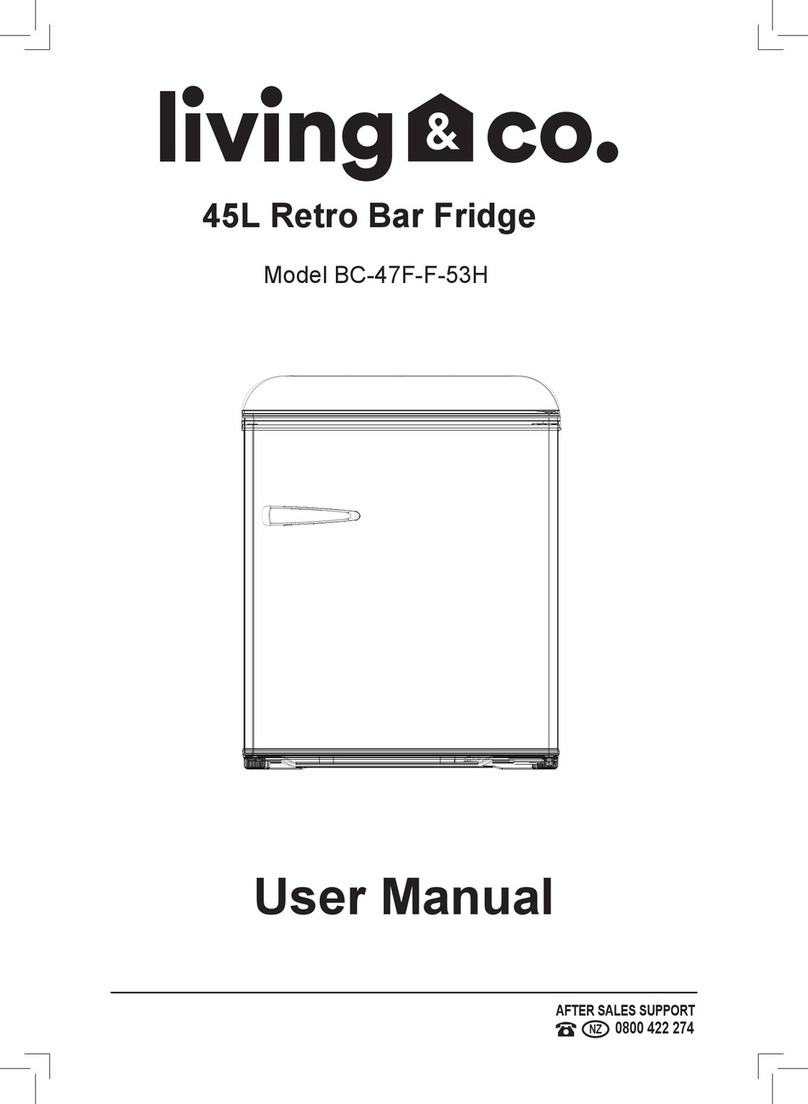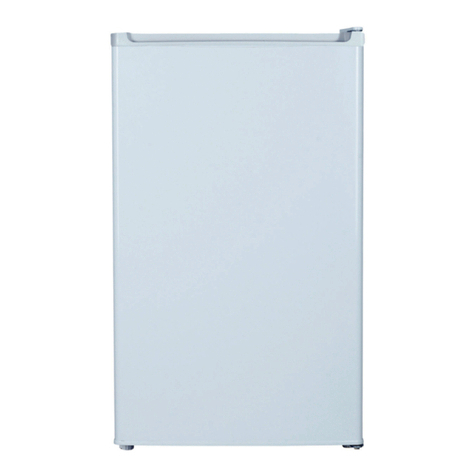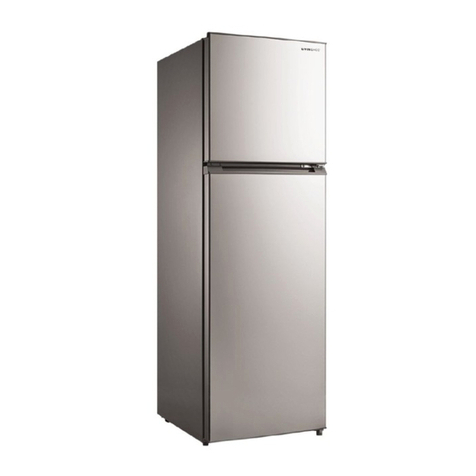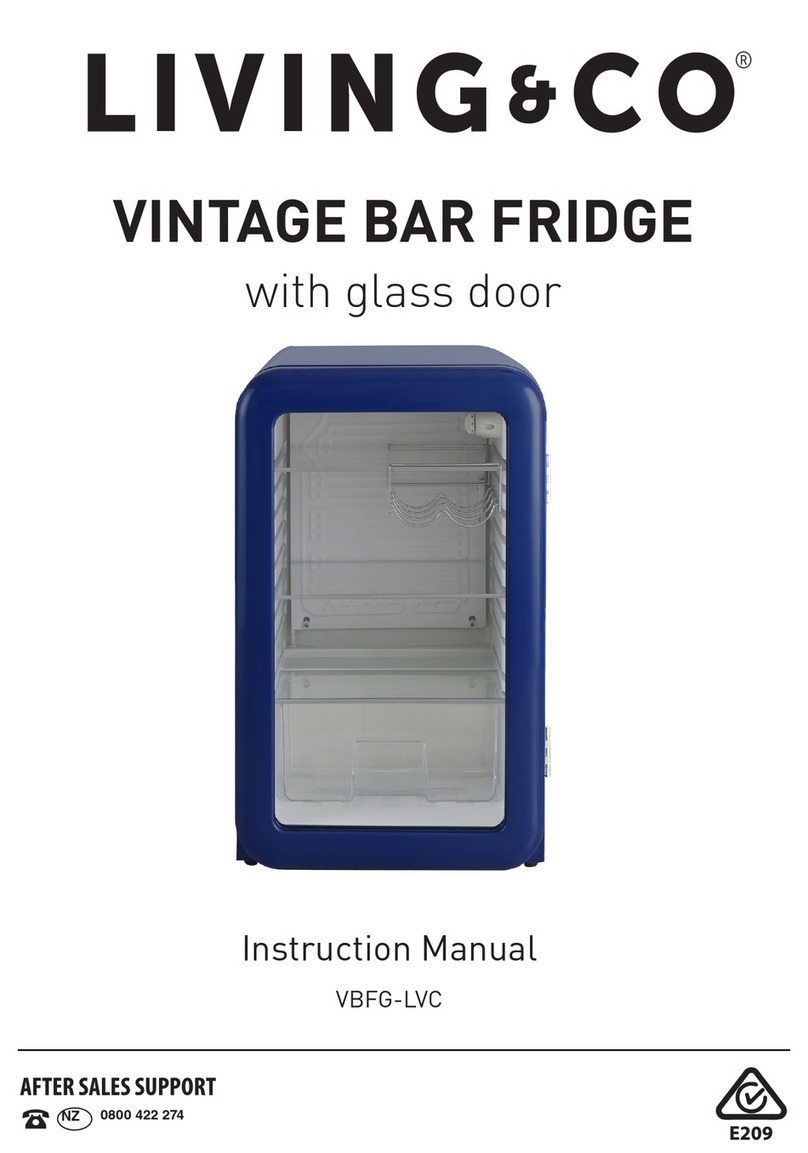
10
4. Product Use
4.1 Space Requirements
• Clearances: Ensure that air can circulate freely around the back of the cabinet,
which is necessary to cool the compressor and condenser. Allow at least 10cm clear
space at the back and 5cm at the sides of the unit.
•Overhanging wall units: Ideally, the appliance should not be positioned below
overhanging wall units. However, if the appliance must be positioned below an
overhanging wall unit, make sure to allow sucient room so you can comfortably
open the lid and access the contents.
4.2 Electrical Connection
• WARNING! It must be possible to disconnect the appliance from the mains power
supply; the plug must therefore be easily accessible after installation.
•Before plugging in your new fridge let it stand upright for at least 4 hours.
This will allow the refrigerant gases to settle into the compressor and reduce the
possibility of a malfunction in the cooling system.
•When rst starting up, and after a period out of use, allow the unit to cool down
on the highest setting (position 6) for at least 2 hours before placing food in
the fridge.
•The appliance must be earthed. The plug of the power supply cord is equipped with
a contact for this purpose. Do not under any circumstances cut or remove the third
(earth) prong from the power cord. If the plug does not t your outlet, consult a
licensed electrician for advice to have the outlet changed.
•Plug the unit into a dedicated, properly earthed wall outlet. Ensure that your outlet
voltage and circuit frequency correspond to the voltage stated on the rating label.
•Secure the fridge’s supply cord behind the unit. Do not leave it exposed or dangling
to prevent injury and accidental disconnection from the power supply.
•Adjust the temperature control as described below.
4.3 Going Away?
• Short vacation: Leave the fridge operating during vacations of less than a month.
•Long vacation: If you are not going to use the fridge for longer periods, remove all
food and unplug the power cord. Clean and dry the interior thoroughly. To prevent
odor and mould growth, leave the lid open slightly, blocking it open, if necessary.
(Restrict children’s access to the room with the open fridge to avoid creating a child
entrapment risk.)
4.4 Moving the Fridge
•Remove all food from inside the fridge, securely tape down the shelves and tape the
door shut. Turn the leveling feet up to the base to avoid damage.
•Protect the outside of the unit with a blanket or similar soft material and make sure
the fridge stays secure in the upright position during transportation.


































